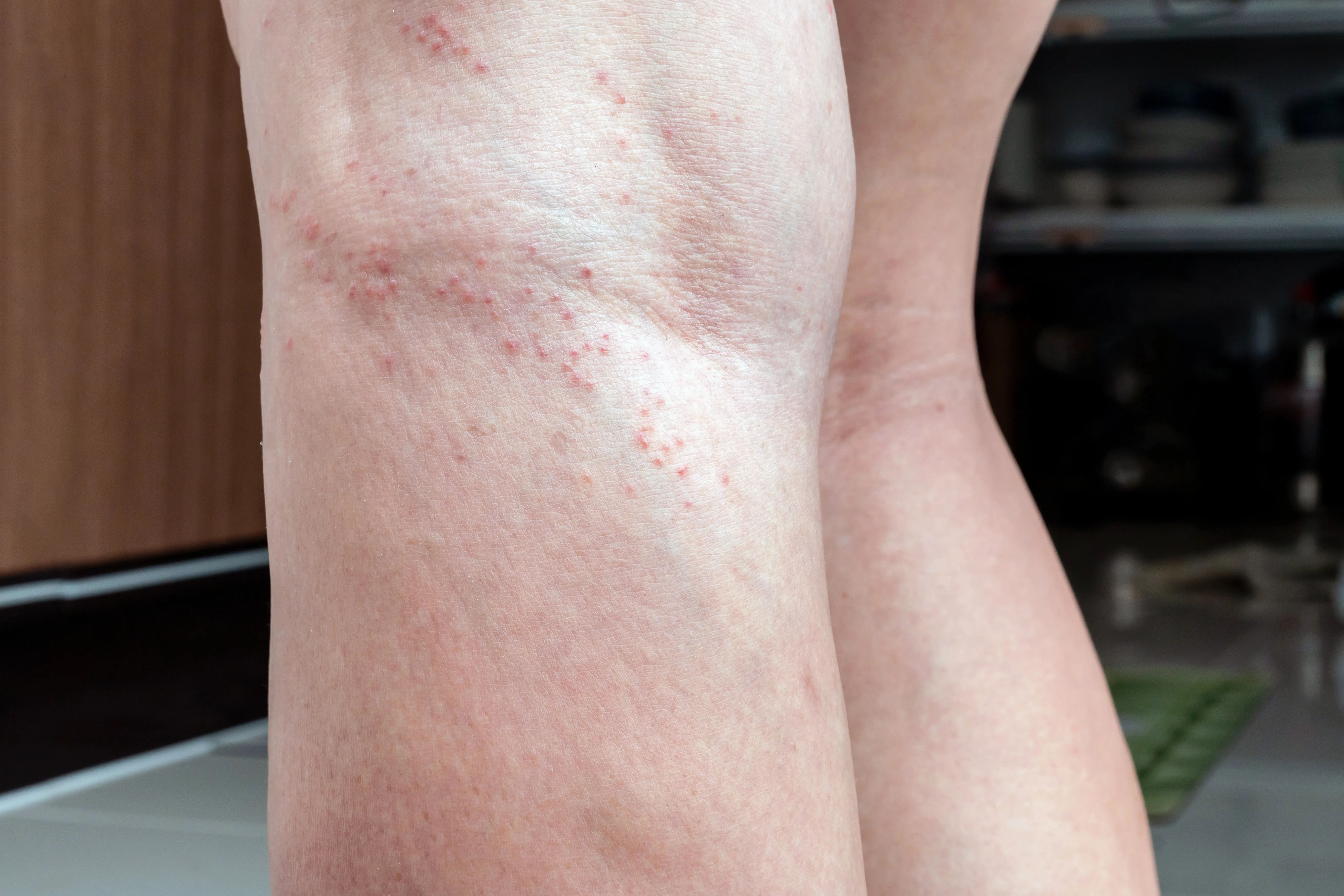Anaphylaxis Overview: Symptoms, Causes, and Management
Learn about anaphylaxis, a severe and potentially life-threatening allergic reaction. Discover its symptoms, common causes, emergency treatment, and long-term management strategies to stay safe.

.webp?tr=q-80,f-webp,w-350,dpr-2,c-at_max 700w)
Anaphylaxis is a severe, life-threatening allergic reaction that requires immediate medical attention. It can happen within seconds or minutes of exposure to an allergen and affects multiple body systems. While it can be frightening, understanding the signs, causes, and management can help you stay prepared and take quick action if needed.
What is Anaphylaxis?
Anaphylaxis is an extreme immune system response to an allergen, something that your body mistakenly identifies as harmful. When exposed to the allergen, your body releases chemicals that cause a sudden drop in blood pressure, narrowing of airways, and other dangerous symptoms. If not treated promptly, anaphylaxis can be fatal.
Consult a Top Pulmonologist
Common Symptoms of Anaphylaxis
Symptoms usually appear quickly and may include:
- Skin reactions: Hives, itching, flushed or pale skin
- Swelling: Face, lips, tongue, or throat (which can block breathing)
- Breathing difficulties: Wheezing, shortness of breath, tightness in the chest
- Low blood pressure: Dizziness, fainting, rapid or weak pulse
- Digestive issues: Nausea, vomiting, diarrhea
- Other signs: A feeling of doom, confusion, or loss of consciousness
If you or someone around you experiences these symptoms after exposure to a known allergen, seek emergency help immediately.
Common Causes of Anaphylaxis
Anaphylaxis can be triggered by various allergens, including:
- Foods: Peanuts, tree nuts, shellfish, eggs, milk, and sesame are common culprits.
- Insect stings: Bees, wasps, hornets, and fire ants can cause severe reactions.
- Medications: Penicillin, aspirin, and certain pain relievers may trigger anaphylaxis.
- Latex: Found in gloves, balloons, and medical devices.
- Exercise-induced: Rare but possible, especially after eating certain foods before physical activity.
Sometimes, the exact cause isn’t clear (idiopathic anaphylaxis). If you’ve had a severe allergic reaction before, it’s important to identify the trigger with an allergist’s help.
How Anaphylaxis Affects Your Health
Anaphylaxis can lead to:
- Difficulty breathing due to swollen airways.
- from a sudden drop in blood pressure.
- Loss of consciousness if the brain doesn’t get enough oxygen.
- Cardiac arrest in extreme cases.
Without prompt treatment, anaphylaxis can be deadly. That’s why recognizing symptoms early and acting fast is crucial.
Emergency Treatment for Anaphylaxis
If you suspect anaphylaxis:
1. Use an epinephrine auto-injector (EpiPen) immediately if available. This is the first-line treatment to reverse symptoms.
2. Call emergency services (911 or local emergency number) even if symptoms improve after epinephrine, as a second reaction (biphasic anaphylaxis) can occur.
3. Lie down with legs elevated to help blood flow to vital organs.
4. Avoid standing or walking, as it can worsen low blood pressure.
5. Administer CPR if needed if the person stops breathing.
Long-Term Management & Prevention
If you or a loved one is at risk of anaphylaxis, follow these steps:
- Carry an epinephrine auto-injector at all times and ensure family/friends know how to use it.
- Wear a medical alert bracelet indicating your allergy.
- Avoid known triggers by reading food labels carefully and informing restaurants about allergies.
- See an allergist for testing and a personalized action plan.
- Educate others like teachers, coworkers, and caregivers should recognize anaphylaxis signs.
When to See a Doctor
If you’ve had a severe allergic reaction before, consult an allergist to:
- Identify your triggers through allergy testing.
- Get a prescription for an epinephrine auto-injector.
- Learn how to manage future reactions.
If you're unsure about your allergies or need expert advice, you can book a consultation with an allergist on Apollo 24|7 for personalized care.
Final Thoughts
Anaphylaxis is serious but manageable with awareness and preparedness. Knowing the symptoms, carrying emergency medication, and avoiding triggers can save lives. If you suspect you or someone else is experiencing anaphylaxis, act fast—every second counts.
Consult a Top Pulmonologist
Consult a Top Pulmonologist

Dr. P Sravani
Pulmonology Respiratory Medicine Specialist
3 Years • MBBS, MD
Visakhapatnam
Apollo Clinic Vizag, Visakhapatnam

Dr. Hyder
Pulmonology Respiratory Medicine Specialist
5 Years • MBBS, MD (PULMONOLOGY)
Guntur
Kalam chest and multi-speciality clinic, Guntur

Dr. E Prabhakar Sastry
General Physician/ Internal Medicine Specialist
40 Years • MD(Internal Medicine)
Manikonda Jagir
Apollo Clinic, Manikonda, Manikonda Jagir
(125+ Patients)

Dr. K Prasanna Kumar Reddy
Pulmonology Respiratory Medicine Specialist
16 Years • MBBS, DTCD (TB&CHEST), DNB (PULM MED), FCCP
Hyderabad
Apollo Medical Centre Kondapur, Hyderabad

Dr. R. Nithiyanandan
Pulmonology/critical Care Specialist
6 Years • MBBS, MD Internal Medicine , DM Pulmonary and critical care medicine
Chennai
Apollo Hospitals Greams Road, Chennai
(25+ Patients)
Consult a Top Pulmonologist

Dr. P Sravani
Pulmonology Respiratory Medicine Specialist
3 Years • MBBS, MD
Visakhapatnam
Apollo Clinic Vizag, Visakhapatnam

Dr. Hyder
Pulmonology Respiratory Medicine Specialist
5 Years • MBBS, MD (PULMONOLOGY)
Guntur
Kalam chest and multi-speciality clinic, Guntur

Dr. E Prabhakar Sastry
General Physician/ Internal Medicine Specialist
40 Years • MD(Internal Medicine)
Manikonda Jagir
Apollo Clinic, Manikonda, Manikonda Jagir
(125+ Patients)

Dr. K Prasanna Kumar Reddy
Pulmonology Respiratory Medicine Specialist
16 Years • MBBS, DTCD (TB&CHEST), DNB (PULM MED), FCCP
Hyderabad
Apollo Medical Centre Kondapur, Hyderabad

Dr. R. Nithiyanandan
Pulmonology/critical Care Specialist
6 Years • MBBS, MD Internal Medicine , DM Pulmonary and critical care medicine
Chennai
Apollo Hospitals Greams Road, Chennai
(25+ Patients)




